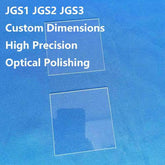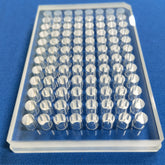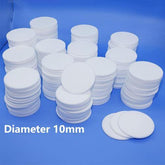The Impact of Quartz Plate Transparency on Experimental Outcomes
Quartz, as an important inorganic non-metallic material, is widely used in the manufacturing of laboratory instruments due to its excellent physical and chemical properties. Among them, transparency is one of the most prominent features of quartz plates, directly affecting the accuracy of experimental results, the convenience of operation and the safety of experiments. This article will systematically analyze the influence of quartz plate transparency on experiments from five aspects: optical experiments, chemical reaction observation, instrument durability, temperature control, and experimental errors.
1. Key functions in optical experiments
In the realm of optical experimentation, including ultraviolet-visible spectroscopy and fluorescence spectroscopy, the remarkable transparency of quartz, particularly in the ultraviolet spectrum, serves as the foundation for the success of these experiments. Ordinary glass is highly absorbent of ultraviolet light with wavelengths of less than 350nm. In comparison, quartz maintains excellent light transmittance within the range of 185-2500nm. For instance, when determining DNA concentration, the absorption at a wavelength of 260nm must be measured. Quartz cuvettes guarantee complete transmission of ultraviolet light, whereas standard glassware can result in signal attenuation of over 90%.
2. Real-time monitoring of chemical reaction processes
For experiments such as photocatalysis and polymerization reactions that require observing the process, transparent quartz vessels enable researchers to directly observe key occurrences such as the colour change of the solution and the formation of precipitates. In contrast, semi-transparent or opaque containers can mask the details of the reaction, leading to incorrect timing of the sample. In crystal growth experiments in particular, the transparency of quartz cuvettes enables polarising microscopes to observe the anisotropic growth process of crystals directly, which is crucial for controlling the crystal morphology.
 3. Instrument durability and experimental safety
3. Instrument durability and experimental safety
In high-temperature experimentation, the transparent quartz reaction tube has been shown to withstand sudden temperature changes of 1200°C without fracturing, while retaining over 95% of its initial light transmittance. Research findings, based on a comparison of 300 cycles of high temperatures, indicate that light transmittance of conventional glassware decreased by 40% and fissures appeared, whereas quartz plates exhibited only a 2% reduction in transmittance. This stability not only ensures the consistency of long-term experimental data but also avoids the risk of solution leakage caused by instrument rupture.
4. The accuracy of temperature control
The thermal radiation characteristics of transparent quartz significantly influence the accuracy of temperature control. In solution heating experiments, transparent quartz beakers enable infrared thermometers to directly measure the temperature of the solution, thereby avoiding measurement deviations induced by the container walls. Experimental data indicate that when using quartz containers, temperature control errors can be maintained within ±0.5 °C, representing a threefold improvement in accuracy compared to opaque containers. Furthermore, in photothermal conversion studies, transparent quartz reactors facilitate uniform light penetration and prevent localized overheating.
 In summary, the transparency of quartz plates significantly influences not only the observation of experimental phenomena but also, more critically, measurement accuracy, reaction control, and equipment reliability. Researchers are advised to select quartz plates with optimal transparency and to establish standardized maintenance protocols according to the specific experimental wavelength range, temperature conditions, and precision requirements. Only through such measures can performance advantages of quartz materials be fully realized, thereby ensuring the scientific validity and repeatability of experimental data.
In summary, the transparency of quartz plates significantly influences not only the observation of experimental phenomena but also, more critically, measurement accuracy, reaction control, and equipment reliability. Researchers are advised to select quartz plates with optimal transparency and to establish standardized maintenance protocols according to the specific experimental wavelength range, temperature conditions, and precision requirements. Only through such measures can performance advantages of quartz materials be fully realized, thereby ensuring the scientific validity and repeatability of experimental data.






